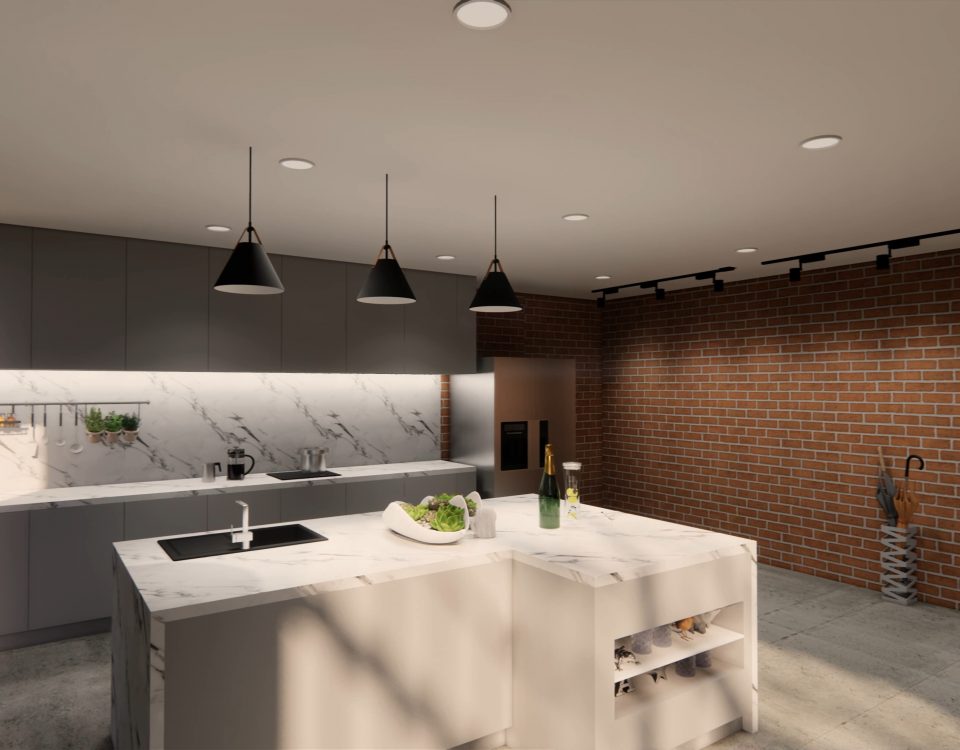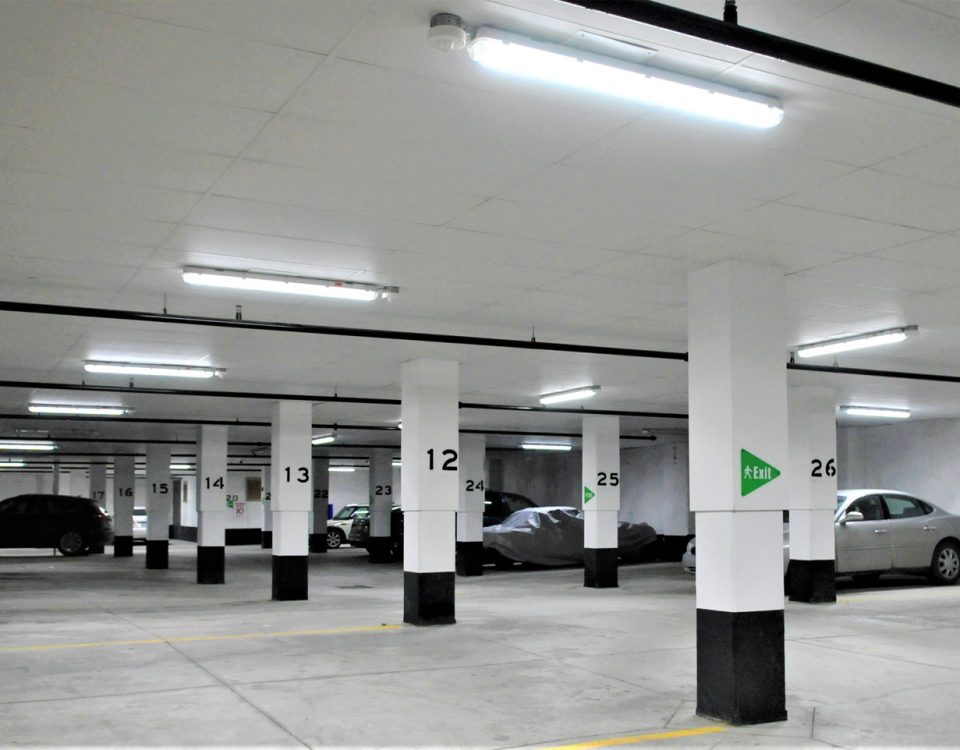Important Things to Know about Warehouse Lighting

Brighten Up Your Commercial Space for Thanksgiving with Faraday Lighting Solutions
October 4, 2021
Top 6 Lighting Practices for Automobile Dealerships
October 25, 2021Choosing the right warehouse lighting for your facility can be challenging. There are a lot of complex factors involved from the selection and purchasing stage right down to the installation process. Size, layout, illumination requirements in various parts of your facility, overhead costs, and your lighting budget all factor into the selection process. Light isn’t always evenly distributed throughout your warehouse as some areas might not be as exposed to natural lighting as others. That means you may have to purchase different, brighter light sources for specific sections of your warehouse.
Performing routine lighting audits in Toronto warehouses can help to determine what type of improvements are required and how they can be most effectively and cost-efficiently executed. Keep reading to learn about optimal industrial lighting solutions in the GTA that maximize your facility’s brightness without increasing your operational costs.
How Much Light Efficiency Do Warehouses Need?
Some warehouses have operations that run 24/7. Shipments are constantly being received or sent out. That means that the lights are always on. As a result, overhead and operational costs can easily skyrocket if they’re not kept in check.
With the right commercial lighting solutions in Toronto such as installing state-of-the-art low energy output LED lights, you can prioritize illumination and energy efficiency and reduce your operational costs and monthly bills significantly.
The amount of light needed to illuminate your entire warehouse depends on the size and layout of the space and how much natural lighting it gets. Large warehouses are especially difficult to work with because they typically have a lot of storage shelving and inventory that can block out light or create dark shadows in certain areas. Portions of the warehouse that are hindered by tall shelving units will require more illumination than wide open areas that are meant for transporting goods rather than storing them.
What Type of Light Source Works Best for Warehouses?
Conventionally, warehouse lighting in Toronto consisted of either high intensity discharge (HID) or fluorescent lights. HID and fluorescent lights are still commonly used for warehouses today, but they’re extremely cost-prohibitive and tend to overheat when used for long periods of time. HID lamps also have an incredibly high lumen depreciation rate. They also have limited colour temperature options compared to fluorescent and LED lighting solutions.
Although fluorescent lights consume significantly less energy than HID lights, they’re only a marginally better alternative. Fluorescent lights have a wider range of colour temperature options and come in a variety of shapes and sizes to light up your warehouse, but they also have insurmountable operational temperature constraints that can cause them to malfunction in extreme heat or cold. This makes them unsuitable for Canadian summers and winters.
Out of the three, LEDs are arguably the best and most affordable long-term commercial and industrial lighting solutions in Toronto and the GTA. Not only do they consume considerably less energy than their predecessors, but their light emission capabilities are comparable to HIDs and fluorescent tube lights, if not brighter.
Moreover, in the right temperature conditions, LEDs have a lifecycle of about 100,000 usage hours before having to be replaced. Cold temperatures have little to no impact on the quality and lifecycle of LED bulbs, which makes them perfect for Canadian winters. The only drawback is that extreme heat could slightly reduce their light emission capabilities over time.
What Type of Light Distribution Do Warehouses Need?
Light distribution requirements vary largely based on the square footage, layout, and configuration of your warehouse facility. As mentioned, some facilities have more dark spots and corners that require additional illumination. There are two types of light distribution that can address these issues and illuminate specific spaces: I and V.
I light distribution is ideal for spaces within your facility that feature tall floor to ceiling shelving units because they emit long and narrow light patterns that can’t be blocked by the shelves or inventory that’s stored on them.
V light distribution is designed for open floorplans. They emit a circular or square light pattern that spreads in a more widespread fashion to illuminate large open spaces evenly.
What Brightness Levels are Appropriate for Warehouse Lighting Fixtures?
To maximize productivity, comfort, and operational efficiency in your warehouse, it’s important to provide workers with sufficient lighting. Brightness levels of lighting fixtures ultimately depend on the size and layout of your floorplan. However, the paint colour on the walls and ceilings also make a difference.
Lighter paint colours reflect more light than dark colours. This allows you to use LED lights with lower lumen emissions, which also increases lighting energy efficiency. Skylights also provide more natural lighting during the daytime, which means you won’t have to rely as much on electrical light sources.
If you opt for low lumen solar-powered LED lights, you can save even more energy for nighttime operations. The lights will run primarily on energy absorbed from the sun and will still have a low energy consumption output, which means that less electricity will be used.
What Is the Ideal Light Colour Temperature for Warehouses?
Warehouses require a great deal of bright, comfortable lighting to facilitate proper visibility, increase productivity, and reduce the risk of eyestrain for employees. Colour temperature plays a big role in enabling visibility and comfort. Ideally, the colour temperature of your warehouse lighting fixtures should be somewhere between 4000K and 5000K to emit a cool white or soft bluish light that increases productivity and comfort levels.
What Is the Correct Positioning for Lighting Fixtures in Warehouses?
Avoid installing lighting fixtures too close together as this can result in extreme hot spots and glares, which decreases visibility for workers. It’s the equivalent of driving on a road after dark and being blinded by the extreme halo effect from oncoming traffic on the opposite side of the road.
This lack of visibility makes for a dangerous working environment. The solution is to leave sufficient amounts of space between the lighting fixtures to prevent the light sources from overlapping one another. But don’t space them out too far apart, though, as this can create dark spots in your warehouse, which is equally dangerous.
Professional Warehouse Lighting Solutions in Canada
As one of the leading providers of commercial and industrial lighting solutions in Canada, Faraday Lighting delivers industrial lighting services in Manitoba, Ontario, Saskatchewan, and Alberta. Our skilled and trained technicians perform extensive lighting audits in Toronto as well as throughout the GTA and Golden Horseshoe regions of Ontario to come up with appropriate and affordable industrial and commercial lighting solutions for our customers. Contact us today to learn more.




